art-and-things-of-beauty: Portrait drawings by John Singer…
Thursday, July 19th, 2018









Portrait drawings by John Singer Sargent, (American, 1856-1925)
Reposted from http://lies.tumblr.com/post/176072855580.










Portrait drawings by John Singer Sargent, (American, 1856-1925)
Reposted from http://lies.tumblr.com/post/176072855580.
“FEMA is certainly correct that disasters must be managed at all levels, but the most important lesson of the 2017 disaster season is that weather disasters are becoming more frequent and more damaging. The government’s failure to grapple with that reality contributed to FEMA’s poor response. For example, the 1988 Stafford Disaster Relief and Emergency Assistance Act—the law that gave FEMA its authority to coordinate disaster relief efforts—ensured that the agency could only re-build Puerto Rico’s weak electricity system after it was wiped out by Maria; it was not allowed to spend money on rebuilding a more resilient electricity system. FEMA could have suggested a change in that law in its after-action report. And yet, just as the agency failed to mention climate change in its February report, it failed to do so in last week’s report. Extreme weather is getting more extreme, and until FEMA recognizes and acts on that reality, it will find itself overwhelmed indefinitely.”
– The Troubling Failure of America’s Disaster Response | The New Republic
(via dendroica)
Reposted from http://lies.tumblr.com/post/176064640056.
“When we are asleep in this world, we are awake in another.”
Reposted from http://lies.tumblr.com/post/176048114089.
Reposted from http://lies.tumblr.com/post/176038601064.

Portrait of Helen Beatrice Myfanwy Hughes, head and shoulders, three-quarter profile to the right, wearing a dark blue chiffon stole around her bare shoulders, her left hand raised (!931). Philip Alexius de László (Hungarian, 1869-1937). Oil on canvasboard.
On the reverse there is an inscription in John de Laszlo’s hand ‘Helen Hughes, aged 17, daughter of / Rt Hon. William Hughes, late Prime / Minister of Australia.’
Reposted from http://lies.tumblr.com/post/176030440860.
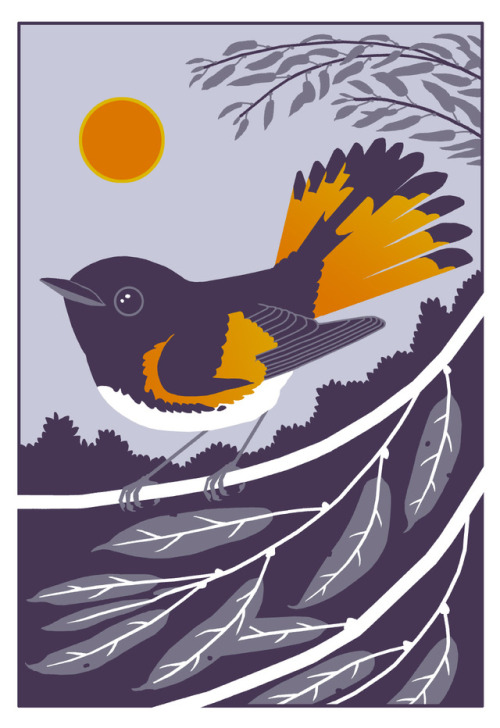
An American Redstart hanging out in some willows.
Reposted from http://lies.tumblr.com/post/176022830334.
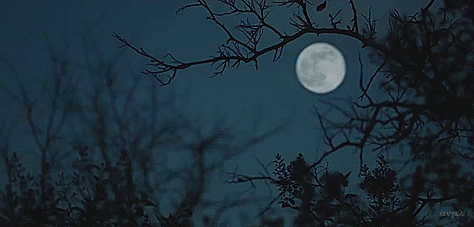
Reposted from http://lies.tumblr.com/post/176003914695.
sylvia-morris
replied to your post “I went on a spectacularly successful pelagic birding trip last Sunday….”
that red-necked pharalope is ADORABLE
This is definitely true. Phalaropes in general have a certain something that makes them cute as buttons. Is it the thin beak and elegant proportions? The clean, contrasting colors?
Fun fact: Phalaropes reverse the usual bird-world rule for sexual dimorphism. Wikipedia explains:
The sexual dimorphism and contribution to parenting are reversed in the three phalarope species. Females are larger and more brightly colored than males. The females pursue and fight over males, then defend them from other females until the male begins incubation of the clutch. Males perform all incubation and chick care, while the female attempts to find another male to mate with. If a male loses his eggs to predation, he will often rejoin his original mate or a new female, who will lay another clutch. Once it becomes too late in the season to start new nests, females begin their southward migration, leaving the males to incubate the eggs and care for the young. Phalaropes are uncommon among birds and vertebrates in general in that they engage in polyandry, one female taking multiple male mates while males mate with only one female. Specifically, phalaropes engage in serial polyandry, wherein females pair with multiple males at different times in the breeding season.[8]
Reposted from http://lies.tumblr.com/post/175978996821.
I went on a spectacularly successful pelagic birding trip last Sunday. To spare your dashboard from individual posts about each of the county year birds I added I’m going to put them all in one post, and I’ll throw in a cut to spare non-mobile dashboards from so much wonderful pelagic-birding content. 🙂
This was the long-range summer pelagic trip conducted by Island Packers, as organized by Ventura-county birder Dave Pereksta. We started from Ventura Harbor at 7 a.m., visited Anacapa Island, then motored west along the south sides of Anacapa and Santa Cruz. Once we reached the northwest corner of the Santa Cruz Basin (an area of very deep water south of the island) we headed south along the underwater escarpment that marks the basin’s western edge. Areas like that tend to be characterized by upwellings that bring nutrient-rich water to the surface, leading to more fish, marine mammals, and birds.
(Side note: I was too focused on the birds to pay much attention to the cetaceans, but we had great views of Minke, Fin, and Blue Whales, as well as several types of dolphins, during this part of the trip.)
We went south as far as a point about 7 or 8 miles north of San Nicolas Island, then turned east and headed to Santa Barbara Island. From there we made the final trip back north to Ventura, passing east of Anacapa. The whole trip took about 12 hours. About half of it was in Ventura County waters, so those birds didn’t count toward my Santa Barbara list; the other half was in Santa Barbara County.
Is it interesting to a non-county-list-obsessed person how the offshore county boundaries are drawn for bird-watching purposes? Probably not; apologies… But basically, county boundaries don’t actually exist far out in the ocean, so birdwatchers have come up with a system of assigning pelagic birding “counties” based on whatever the closest point of land is. This makes for an interesting patchwork off southern California, since some islands (Anacapa and San Nicolas) are in Ventura County, while others (Santa Cruz, Santa Rosa, and Santa Barbara) are in Santa Barbara County. Fortunately, keeping track of all that was up to the trip leaders: Super-experienced birders who got a free ride (I assume) in return for acting as guides for the paying customers, keeping the county-specific eBird lists and helping find and identify birds.
Enough meta; on with the birds!
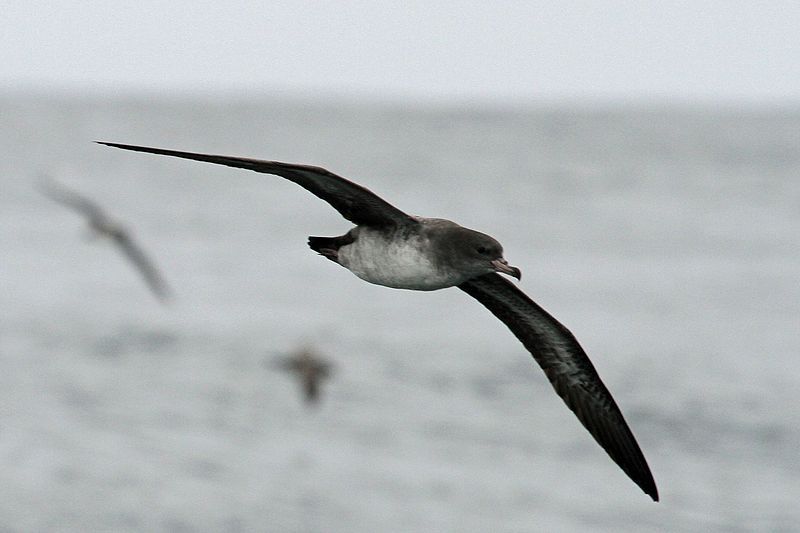
Pink-footed Shearwater (Ardenna creatopus)
Photo by Flicker user Greg Schechter
#277
We saw thousands of Sooty Shearwaters during the trip, but I’d already managed to add those to the list by scoping from shore at Ocean Beach Park west of Lompoc. The Pink-footed Shearwaters were another story, though. We saw lots of them mixed in with the Sooties, and I soon got familiar with their slightly slower flight style.
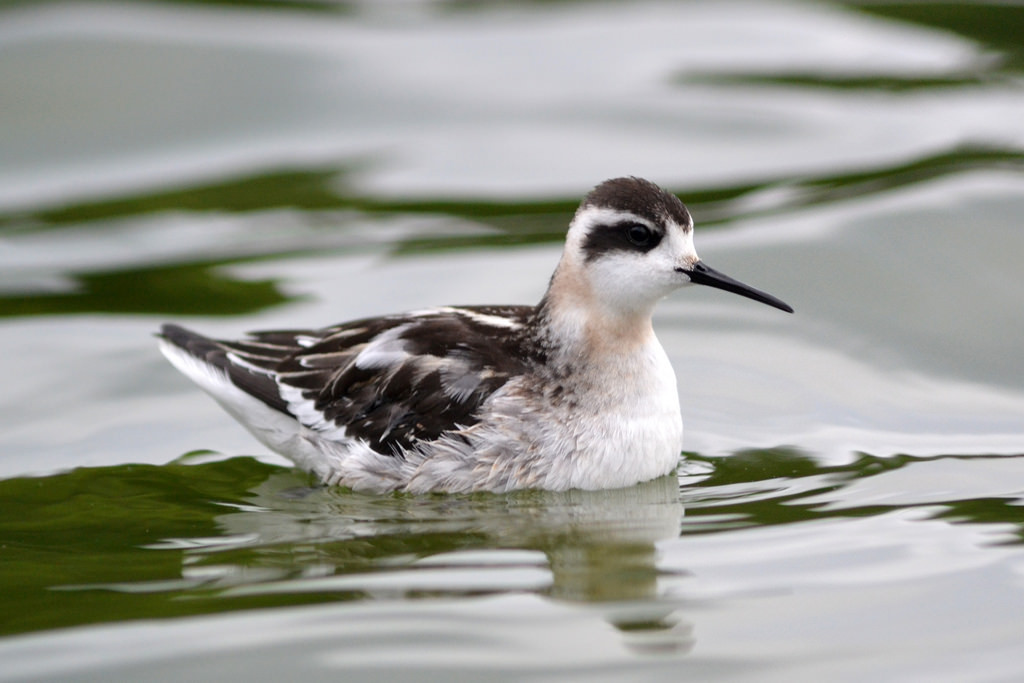
Red-necked Phalarope (Phalaropus lobatus)
Photo by Flickr user Andrew Cannizzaro
#278
We saw a few of these at various points during the trip, skittering away from the boat across the water. I’m pretty sure at least one group was in Santa Barbara County waters, though I won’t know for sure until the official trip lists are shared with participants.

Cook’s Petrel (Pterodroma cookii)
#279
Such a cool bird! They breed in New Zealand, but during the Northern Hemisphere summer they range up into the eastern part of the North Pacific. Our trip leaders weren’t expecting to see them since we weren’t going to be far enough offshore, but surprise! We saw a lot of them in both counties; close to 100 in the final count. I loved getting to know their graceful, arcing flight pattern, the way they swoop down toward the water and up again, similar to but distinctly different from the shearwaters they were hanging out with.
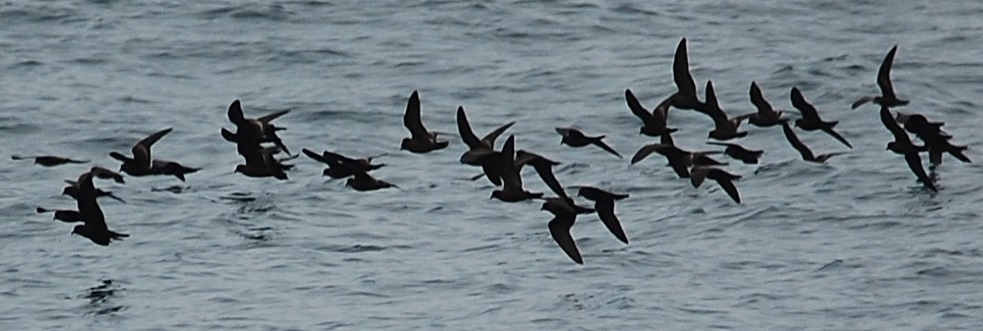
Black Storm-Petrel (Oceanodroma melania)
Image by Wikipedia user Cato Neimoidia
#280
I’d never identified a storm-petrel before. I’m sure I must have seen them, having spent so much time sailing off southern California growing up, but almost all of that time I was racing, not birdwatching, and I guess I just kept the two activities compartmentalized. Anyway, I’ve now enjoyed quality views of a whole bunch of Black Storm-Petrels; we saw lots of them throughout much the trip.
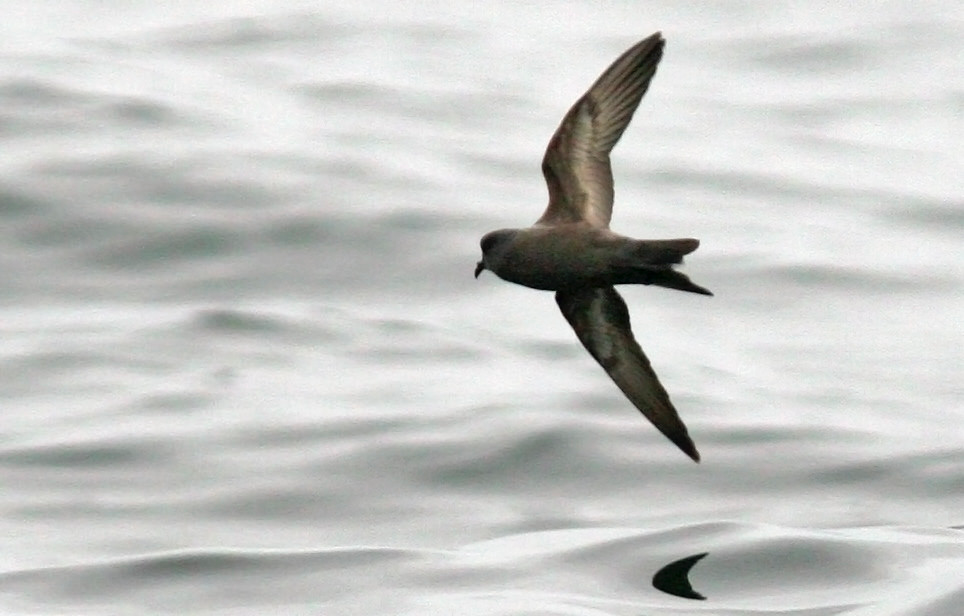
Ashy Storm-Petrel (Oceanodroma homochroa)
Photo by Jeff Poklen
#281
I was grateful to have expert birders around to help me learn these. Peter Gaede (who led our Big Pine Mountain survey trip) patiently showed me how the Black Storm-Petrels had deeper wingbeats, while the slightly smaller Ashies had quicker, shallower wingbeats. The difference was subtle, but with someone standing next to me to confirm the IDs it didn’t take long to be able to pick them out.
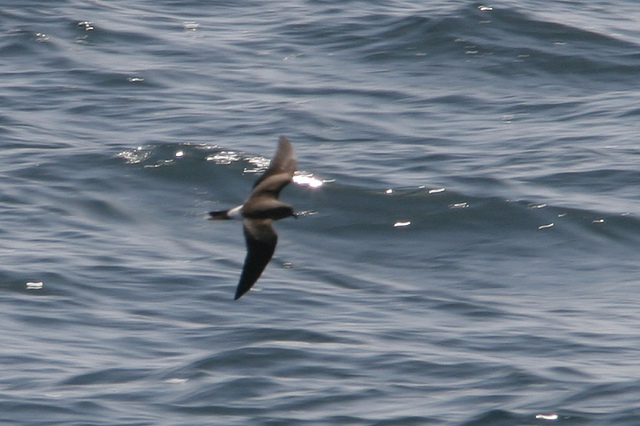
Leach’s Storm-Petrel (Oceanodroma leucorhoa)
Photo by Flickr user Marcel Holyoak
#282
Again, I was lucky to have experts around to find and point out the different storm-petrels in the big groups we motored through; I saw a few of these at various points. Some of the more-expert birders on the boat saw a few additional storm-petrel species, but I wasn’t able to get on any of those.
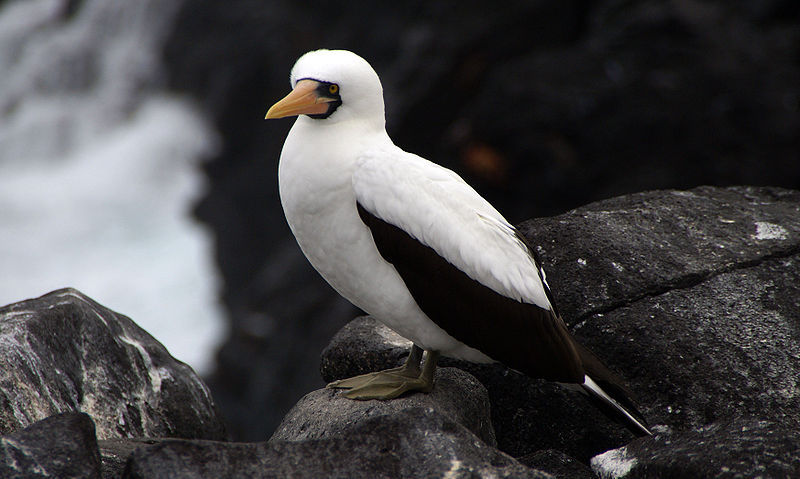
Nazca Booby (Sula granti)
Photo by Flickr user putneymark
#283
This is the bird (actually birds) that the trip leaders were most excited about. It’s a super-rarity that normally lives in the Galapagos Islands, but a few have showed up in Southern California in recent years. We saw one perched on Arch Rock on the east end of Anacapa; that one was something like the 3rd or 4th county record for Ventura County. Which was cool and all, but I couldn’t help feeling a twinge of regret that the bird hadn’t been a few miles away in Santa Barbara County. Fast-forward to late afternoon, though, as we were approaching Santa Barbara Island, when a second Nazca Booby appeared out of nowhere and flew right over the boat as dozens of giant lenses tracked it and snapped photos. Apparently that one was only the second Santa Barbara County record; it was a real privilege to be there for it. Officially the sighting will have to be approved by the California Bird Records Committee, but for my low-grade just-for-funsies county year list it definitely qualifies for now.
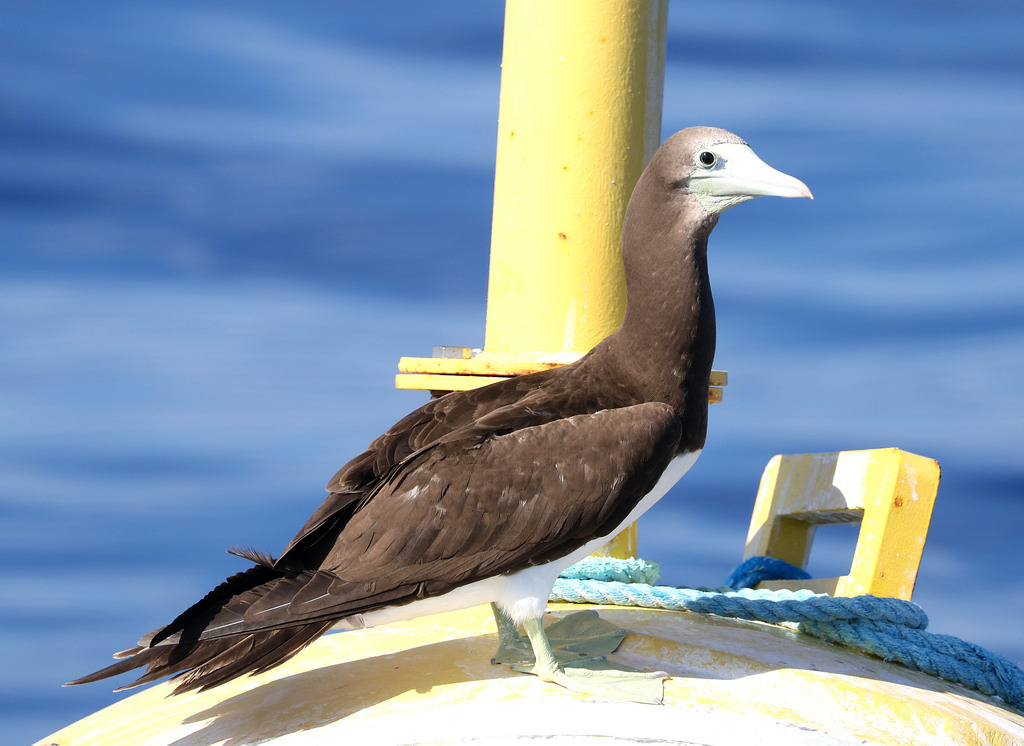
Brown Booby (Sula leucogaster)
Photo by Flickr user Alan Schmierer
#284
Another tropical species that has been expanding its range. I didn’t realize it before the trip, but last November Brown Boobies were discovered nesting on Sutil Island, a small islet a few hundred yards from Santa Barbara Island. We counted more than 40 of them perched on the rocky cliff as we bobbed a few boat lengths from shore.
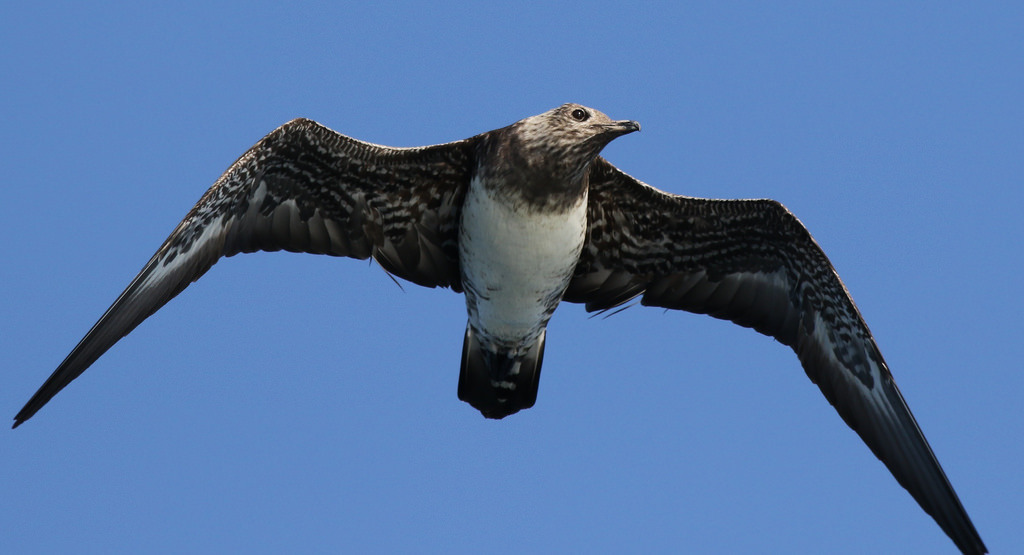
Long-tailed Jaeger (Stercorarius longicaudus)
Photo by Flickr user jacksnipe1990
#285
We saw a few of these near Santa Barbara Island; not the adult form with the long central tail plume that gives it its name, but younger birds like this one. I’ve got a soft spot for jaegers, and seeing these (we saw several) was really special.
That was it for new county year birds, but I also got some great new-to-me birds in Ventura County:
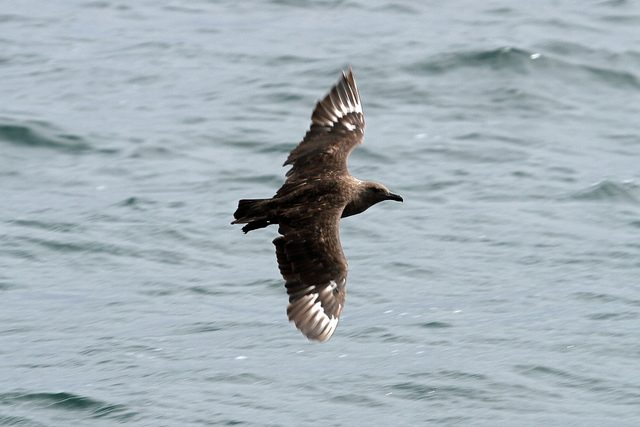
South Polar Skua (Stercorarius maccormicki)
Photo by Flicker user Greg Schechter
This one showed up to check out the chum line that professional bird guide and frighteningly knowledgeable birder Wes Fritz was ladling out from the stern as we cruised north of San Nicolas Island.

American Oystercatcher (Haematopus palliatus)
Photo by Wikipedia user Peter Wallack
One of the goals of the trip was to look for possible American Oystercatchers on the south shore of Anacapa, where they sometimes show up mingled with the local Black Oystercatchers. And… one was there! It’s not for-sure; hybrid American/Black Oystercatchers also tend to show up in Southern California, and there’s a complex formula called the “Jehl scale” that birders sometimes use to try to figure out how “pure” a particular American-ish SoCal oystercatcher is. I dunno; we got good looks and lots of photos of this one, and the assembled experts seemed to think the bird looked pretty good for American.
It wasn’t in Santa Barbara County, so I’m like ¯\_(ツ)_/¯
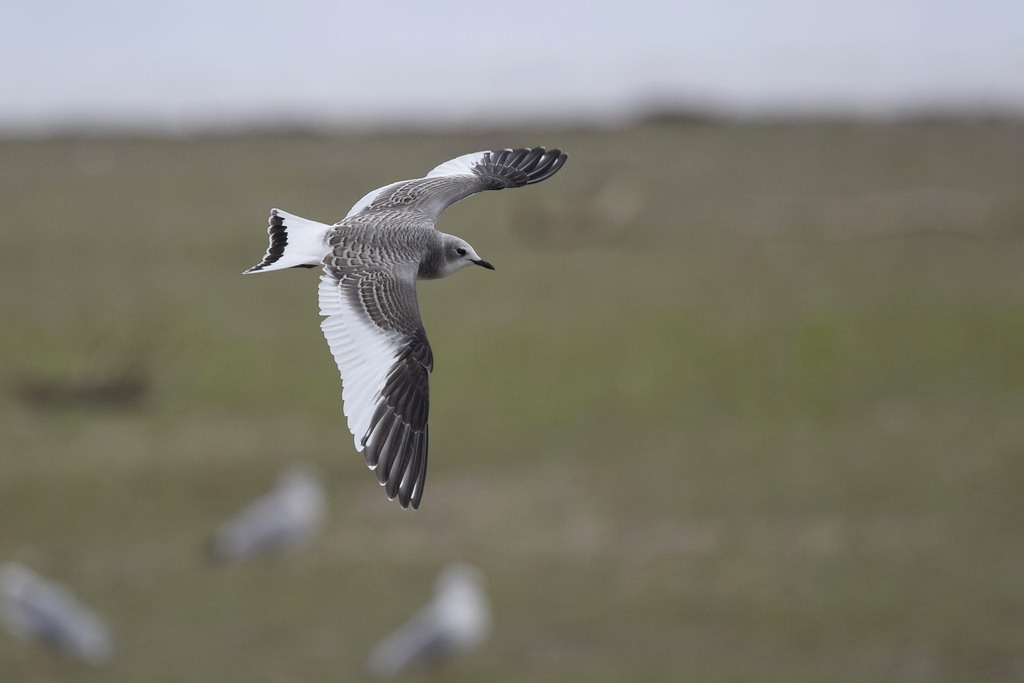
Sabine’s Gull (Xema sabini)
Photo by Flickr users Andy Reago & Chrissy McClarren
This one was a legitimate thrill for me; a bird I’d very much hoped we’d see, that I knew was a possibility but that was also far from a sure thing. It’s a pelagic gull that’s rarely seen from shore, and I was so happy to see it I didn’t even mind that it was in Ventura County.
And that’s it! On the way back the experts on the boat were fairly giddy about how well it had gone; “one of the top 5 Southern California pelagic trips ever!” one said. I’ll take his word for it; it was only my second pelagic birding trip, so I don’t have much to compare it to.
But I sure had a good time.
Reposted from http://lies.tumblr.com/post/175977277766.
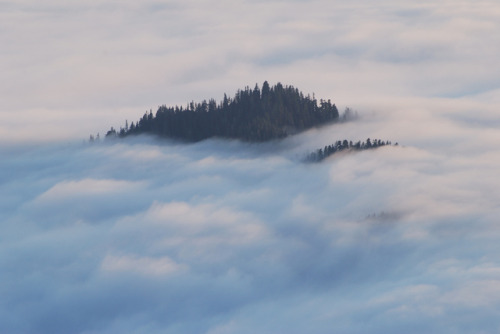
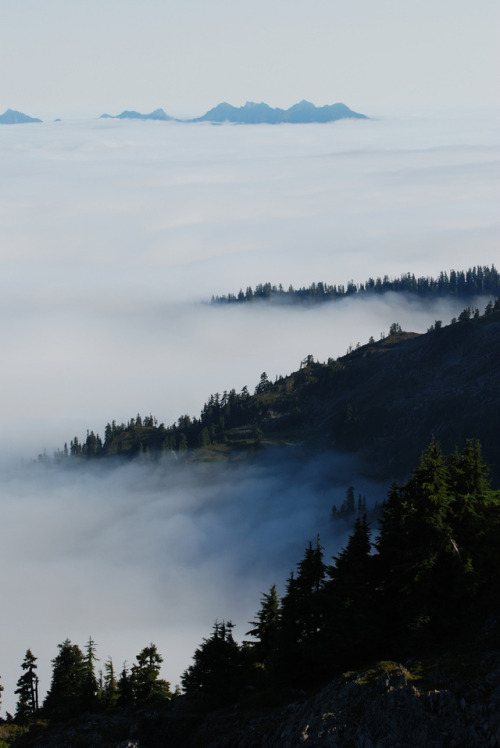
Clouds Shrouding the Wild Land of Kimta Creek by wild trees
Reposted from http://lies.tumblr.com/post/175968847582.





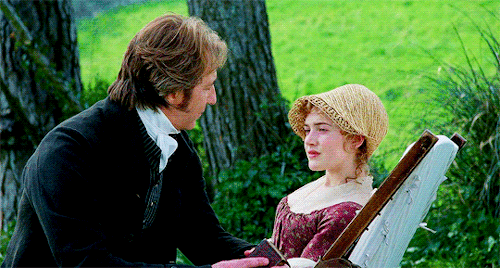
Is love a fancy or a feeling… or a Ferrars?
Sense and Sensibility (1995) dir. Ang Lee
Reposted from http://lies.tumblr.com/post/175960284666.


In the evening, soon after Mr. Bennet went to the library, she saw Mr. Darcy rise also and follow him, and her agitation on seeing it was extreme. She did not fear her father’s opposition, but he was going to be made unhappy; and that it should be through her means––that she, his favorite child, should be distressing him by her choice, should be filling him with fears and regrets in disposing of her––was a wretched reflection.
Reposted from http://lies.tumblr.com/post/175898182089.
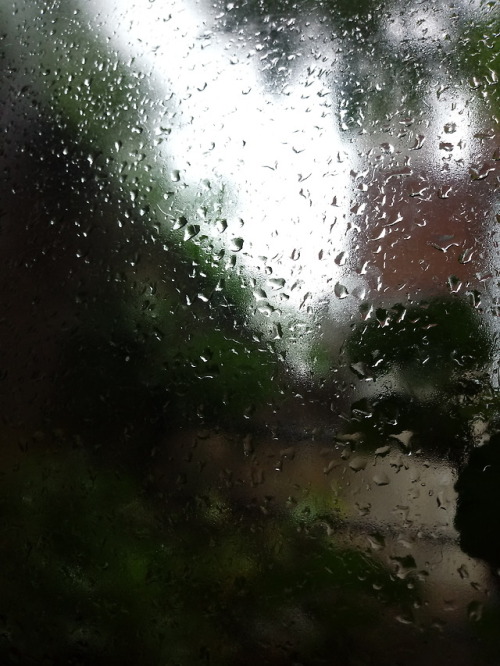

I’ve lost count of how long has been raining / May 2018
Reposted from http://lies.tumblr.com/post/175890367166.